
mRNA image courtesy of Wikimedia Commons.
Scientists have experimented with mRNA for decades, but the pandemic foisted the platform into the limelight. The Pfizer-BioNTech (NYSE:PFE/NSDQ:BNTX) and Moderna (NSDQ:MRNA) COVID-19 vaccines have since emerged as two of the best-selling pharmaceutical products in recent memory.
Researchers are now exploring dozens of new possibilities for the mRNA platform.
Here, we summarize several areas where mRNA could find use in the coming years.
1. Cardiovascular applications

Image by Raman Oza from Pixabay
Researchers at the University of Pennsylvania recently shared positive data related to the use of mRNA and CAR-T cell therapy to treat cardiac fibrosis in a mouse model.
Last year, AstraZeneca (LON:AZN) announced positive results from a Phase 2a study involving injected naked mRNA into the heart of patients undergoing coronary artery bypass surgery. (Myocardial ischemia)
In 2013, researchers affiliated with Moderna published a report in Nature Biotechnology showing that an intramyocardial injection of mRNA encoding human vascular endothelial growth factor-A led to the expansion of endogenous heart progenitors in a mouse model of myocardial infarction.
2. Flu
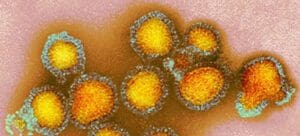
Artificially colored TEM image of H3N2 influenza. Image from Wikimedia Commons.
The basics of creating influenza vaccines have changed little for more than a half-century. First, drug companies predict which strains are likely to predominate months before each flu season. Then, using chicken eggs or mammalian cells to grow flu virus strains, drug companies then inactivate the viruses and process them into vaccines. The effectiveness of flu vaccines hovers somewhere between 40% and 60%, according to CDC.
The flexibility of the mRNA platform could improve the process. For example, Pfizer claims that it could make an RNA vaccine eight days after discovering a flu virus sequence. The company is working with its partner BioNTech on the mRNA-based flu vaccine candidate BNT161. A Phase 1 study of BNT161 is underway.
Moderna is further along with its mRNA-1010 flu vaccine candidate. Interim results from a Phase1 study of the flu vaccine candidate were positive but underwhelming — roughly in line with data from conventional flu vaccines. Moderna also has two other developmental flu vaccines known as mRNA-1020 and mRNA-1030.
Moderna and Novavax (NSDQ:NVAX) have combined COVID-19/flu vaccines in the works.
Sanofi (NSDQ:SNY) also intends to launch clinical trials for its SP0273 quadrivalent influenza mRNA-based vaccine candidate in clinical trials this year.
3. Shingles
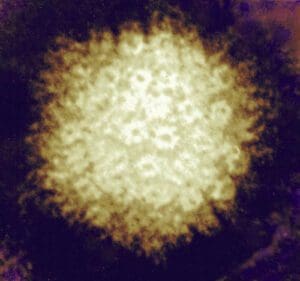
Herpes zoster virus from Wikimedia Commons
The global shingles vaccine market is big business, and by 2028, it could be worth $6.35 billion, according to Grand View Research.
Pfizer and its partner BioNTech have announced their plan to pursue an mRNA-based shingles vaccine. The two companies will likely launch a Phase 1 trial this year.
At present, GlaxoSmithKline’s (GSK’s; NYSE:GSK) Shingrix, a recombinant, adjuvanted vaccine, is the only FDA-approved vaccine for herpes zoster.
Roughly one million people in the U.S. develop shingles each year with an incidence of four cases per 1,000 U.S. population annually, according to the CDC.
4. Lyme disease
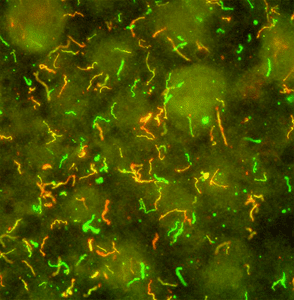
Lyme disease spirochete, B. burgdorferi, a parasite, shown using immunofluorescent antibody technique. Image courtesy of NIAID.
Researchers at Yale University are working on an experimental mRNA vaccine for Lyme disease. Last year, the experimental vaccine fared well in preclinical research involving guinea pigs. Targeting proteins in tick saliva, the experimental vaccine was featured in Science Translational Medicine in November 2021.
There are presently no Lyme disease vaccines on the U.S. market.
GSK had introduced a vaccine known as LYMERix in 1998, but the vaccine was pulled from the market in 2002 owing to low demand.
5. HIV
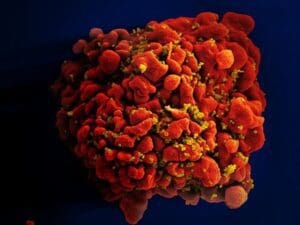
Scanning electron micrograph of an HIV-infected H9 T cell. Credit: NIAID
There are presently no licensed HIV vaccines, although researchers have attempted to develop such vaccines for almost four decades. Researchers continue to work on both preventative and therapeutic HIV vaccines. While the first type could potentially stop infection, the second would slow the progression of HIV in an infected individual.
Moderna has two HIV vaccine candidates in the works in preclinical development: mRNA-1644 and mRNA-1574.
Last year, NIH researchers with Moderna scientists announced positive results from an investigational HIV vaccine.
In August, Moderna announced a Phase 1 study to test two versions of its mRNA-1644 vaccine.
6. Cancer
Researchers have long suspected that mRNA could be a promising platform for oncology. Indeed, efforts investigating the promise of the technology for cancer are ramping up.
Last year, researchers at the Mayo Clinic announced promising data from using mRNA technology in conjunction with immunotherapy. “We found that by introducing mRNA in immune cells, it is possible to produce useful proteins to improve their anti-tumor activity without attempting to change the genome itself,” Dr. Haidong Dong, a professor of immunology at the Mayo Clinic.
Moderna also has several investigational oncology treatments in its pipeline, including mRNA-4157, a personalized cancer vaccine in Phase 2 trials. In the Phase 1 study, mRNA-4157 with Keytruda (pembrolizumab) was well tolerated and was associated with tumor shrinkage in unresectable solid tumors and resected cutaneous melanoma.
Other experimental vaccines include the KRAS vaccine mRNA-5671 and mRNA-2752, which would potentially target solid tumors and lymphoma.
BioNTech also has oncology product candidates in the works, including BNT111 for advanced melanoma, BNT112 for prostate cancer, BNT113 for HPV16+ head and neck cancer and BNT115 for ovarian cancer. BNT111 and BNT113 are in Phase 3 studies.
BioNTech is also partnering with Sanofi on SAR441000, a saline-formulated mixture of four mRNAs targeting a solid tumor indication.
In addition, Phase 2 studies of BioNTech’s BNT122 are underway for first-line melanoma and colorectal cancer. BioNTech is jointly working with Roche subsidiary Genentech (SWX:ROG) on BNT122.
Finally, CureVac’s (NSDQ:CVAC) experimental CV8102 mRNA vaccine showed promise in a Phase 1 clinical trial.
7. Zika
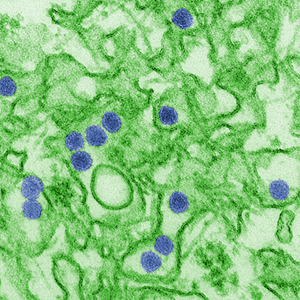
A digitally-colorized transmission electron micrograph (TEM) of Zika virus. Image courtesy of CDC.
Zika remains rare in the U.S., but a pregnant mother can transmit the virus to a fetus, which can lead to microcephaly, a condition where a baby’s head and brain are smaller than normal.
In 2017, Cell published an article concluding that mRNA vaccines can protect against Zika virus infection.
Moderna’s mRNA-1893 Zika vaccine candidate is now in a Phase 2 trial.
Zika rates in the Americas have plummeted in recent years, but outbreaks of the virus are likely in the future.